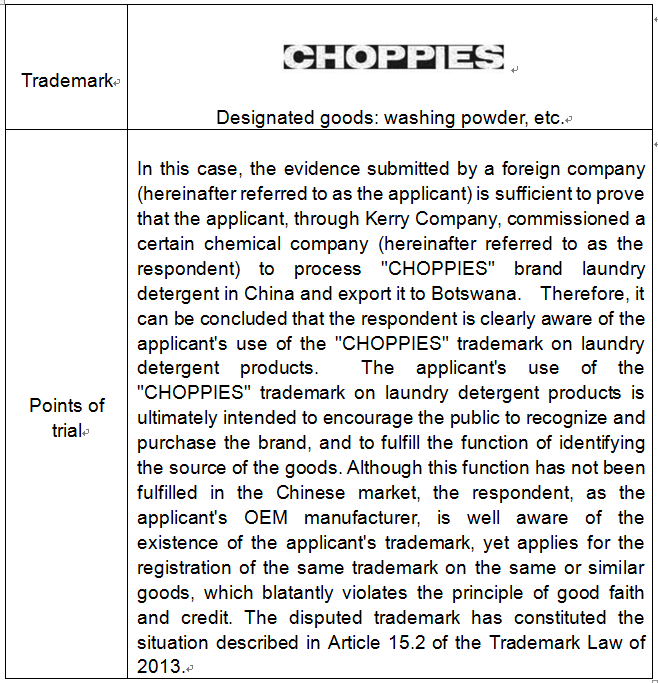
During the process of business consulting, we often encounter situations where clients say, "I am the true owner of the ABC trademark, but my distributor/partner in China has registered my trademark! What should I do?"
Don't worries, the "Trademark Law" can help you with situations where dealers/partners, etc. attempt to register trademarks that the actual trademark owners have not registered.
Article 15 of the Trademark Law states:
Where an agent or a representative applies for registration of a trademark of the principal or the represented party in the agent's or the representative's own name without authorization, the trademark shall not be registered and shall be prohibited from use upon opposition from the principal or the represented party.
Where an applicant for registration of a trademark identical with or similar to an unregistered trademark in prior use by another party on identical or similar goods has any contractual, business or other relationship except the relationship described in the preceding paragraph with the other party and knows the existence of the unregistered trademark, the trademark shall not be registered upon opposition from the other party.
In the previous session, we analyzed Article 15.1 of the Trademark Law. Now, let's continue to examine the specific Article 15.2 of the Trademark Law, and how they can be applied to practical cases.
Article 15.2 of the Trademark Law stipulates the applicable conditions and required evidence.
Legal basis
Article 15.2 of the Trademark Law stipulates: "Where an applicant for registration of a trademark identical with or similar to an unregistered trademark in prior use by another party on identical or similar goods has any contractual, business or other relationship except the relationship described in the preceding paragraph with the other party and knows the existence of the unregistered trademark, the trademark shall not be registered upon opposition from the other party".
This provision is a prohibitive regulation aimed at maliciously preemptive registration of trademarks, with the knowledge of others' trademarks, in relation to contracts, business transactions, or other relationships, except as provided in the preceding provision, for the same or similar goods.
Eligibility criteria
To establish that a specific party has preemptively registered a trademark used by another, the following criteria must be met:
1) The trademark of others was used prior to the application for the disputed trademark in mainland China.
2) The applicant for the disputed trademark has a contractual, business, or other relationship with the person who used the trademark first, and the applicant is aware of the existence of the other person's trademark due to this specific relationship.
3) The disputed trademark is applied on the same or similar goods or services as the trademark used by others first.
4) The disputed trademark is identical or similar to the trademark used by others first.
Evidence proving the existence of contracts, business relationships, and other relationships
The following evidence can prove the existence of contracts, business relationships, and other relationships:
1) Contract;
2) Correspondence, transaction records, purchase documents, etc. that can prove the contract and business relationship;
3) Company payroll, labor contract, social insurance, medical insurance materials, household registration certificate, etc.;
4) Other evidence to prove the existence of specific relationships.
Although the registration application is not made in the name of a specific related person, there is evidence to prove that the applicant and the specific related person have colluded in the registration application. This behavior falls under the scope of specific related person's preemptive registration as stipulated in Article 15.2 of the Trademark Law. In the case of collusive preemptive registration, it can be inferred based on the family, investment, or other relationships between the trademark applicant and the aforementioned specific related person.
Typical case
The situation where one has a subcontracting relationship with others and knowingly applies for registration despite the existence of their trademark
Case: Invalidation of Trademark No. 12035146 "CHOPPIES ".

From the above case, it is not difficult to see that retaining valid evidence (such as signed agreements, invoices, email communications, bank transfer receipts, purchase vouchers, etc.) is of great help in cases of trademark squatting.
We also remind trademark rights holders that they must lay out and plan for their intellectual property early on, and not let malicious squatters take advantage of the situation!


Follow us






